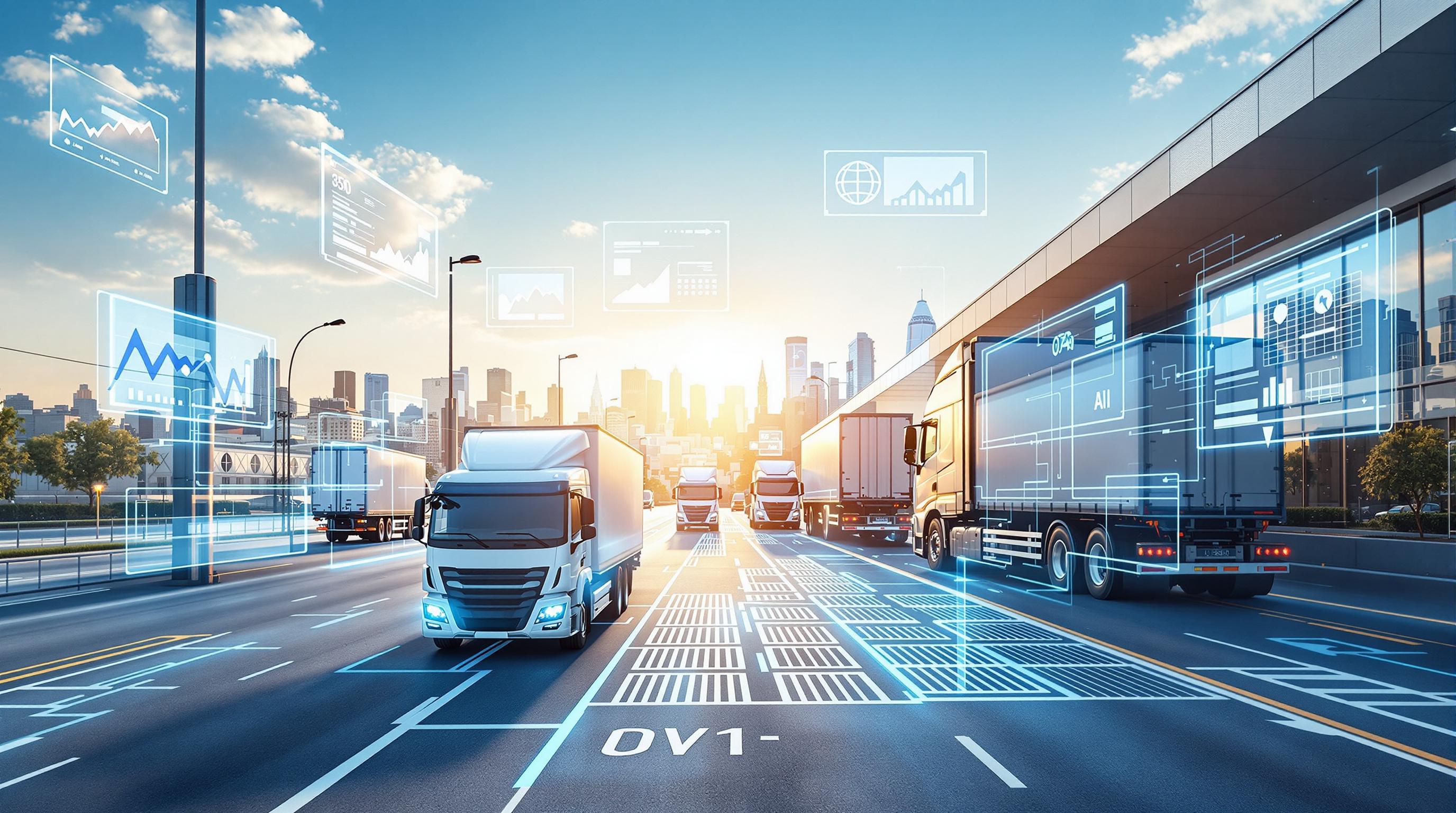Poor route planning costs money and time. It leads to wasted fuel, faster vehicle wear, and unhappy customers. Businesses relying on manual methods or outdated tools risk falling behind. Here’s how to avoid the biggest mistakes and improve efficiency with modern solutions:
-
Top Mistakes to Fix:
- Ignoring live traffic updates.
- Poor stop sequencing, causing backtracking.
- Overlooking vehicle limits like capacity and schedules.
- Using outdated maps or data.
- Relying on manual planning, which is slow and error-prone.
-
How AI Helps:
- Optimizes routes in real-time using live traffic data.
- Plans stops efficiently to reduce miles and fuel use.
- Accounts for vehicle-specific needs like size and capacity.
- Predicts traffic patterns for accurate ETAs.
- Continuously learns to improve routes over time.
-
Benefits of AI Route Planning:
- Cuts fuel costs by up to 30%.
- Reduces delivery times by 20%.
- Lowers vehicle emissions.
- Improves customer satisfaction with on-time deliveries.
For businesses, adopting AI-powered route planning isn’t optional - it’s essential to save costs, stay competitive, and meet rising customer expectations.
9 Best Route Planning & Optimization Software 2025 (Delivery ...
5 Major Route Planning Errors
Fixing these mistakes can make routes smoother and save time and money.
Missing Live Traffic Updates
Skipping real-time traffic data can be a costly error. Jeremy Collins, Azuga's Executive Vice President, puts it plainly:
"Real-time traffic data isn't just nice to have; it's necessary for efficient fleet management."
Without factoring in live traffic, fleets burn more fuel and face delays that disrupt schedules. Pair that with poor stop sequencing, and inefficiencies pile up fast.
Poor Stop Order Planning
When stops aren’t arranged properly, it leads to unnecessary backtracking and wasted resources:
| Area Affected | Result of Poor Planning |
|---|---|
| Fuel Use | More miles driven between stops |
| Time Spent | Longer total route durations |
| Driver Productivity | Extra time navigating between locations |
| Customer Experience | Delays and late deliveries due to inefficiency |
Ignoring Vehicle Limits
Sometimes the problem isn’t just the route, but the vehicle itself. Routes need to account for specific vehicle capacities, driver schedules, and delivery priorities. Ignoring these factors can result in overloaded vehicles, mismatched vehicle types for deliveries, uneven workloads for drivers, and extra wear and tear from unnecessary mileage.
Working with Old Data
Using outdated maps or data can derail even the best plans. Road changes, construction, and new traffic patterns can catch drivers off guard. This forces them to make last-minute adjustments, adding time and burning more fuel.
Manual Planning Limitations
Manual planning falls short when dealing with complex and constantly changing factors. It’s slow, struggles to adapt in real-time, and can't handle the level of detail needed for truly efficient routing.
sbb-itb-7020db0
AI Tools That Fix Route Planning
AI has transformed route planning by automating tasks and using live data to eliminate errors.
Live Traffic Monitoring
AI systems use real-time data from various sources to keep routes efficient throughout the day. Traffic congestion costs the trucking industry $74.5 billion annually and wastes 1.2 billion hours.
DHL’s smart trucking solutions integrate IoT sensors with live traffic data, allowing for immediate route adjustments. In India, this approach has reduced transit times by 20% and cut fuel usage significantly.
AI doesn’t just react to traffic - it creates smarter, more efficient routes based on live data.
Smart Route Creation
AI algorithms handle multiple variables at once to optimize routes. Bert Van Wassenhove from Solvice explains:
"AI route optimization leverages Artificial Intelligence (AI) technologies, including optimization, machine learning, heuristics and predictive analytics, to enhance and streamline routing decisions."
Here’s how Universal Transit improved operations using AI:
| Improvement Area | Result |
|---|---|
| Delivery Times | 20% faster |
| Fuel Expenses | 15% reduction |
| Carbon Footprint | 12% decrease |
| Overall Profitability | 10% increase |
Vehicle-Specific Planning
AI tailors routes by considering each vehicle’s unique features. These systems analyze:
- Vehicle capacity
- Fuel efficiency
- Maintenance schedules
- Driver hour limits
- Specific delivery needs
Traffic Pattern Forecasting
AI tools predict traffic with impressive accuracy. For example, Google Maps achieves over 97% accuracy in ETA predictions. These systems combine historical trends with live data to foresee and avoid delays.
Self-Improving Systems
AI route planners continuously improve over time. Komal Puri, AVP Marketing at FarEye, highlights this:
"AI algorithms process large amounts of data quickly and accurately, leading to highly optimized routes that minimize travel time and distance, and improve overall operational efficiency."
UPS’s ORION system is a great example. By learning from delivery patterns and real-time conditions, ORION has saved millions of miles annually, cutting fuel consumption and emissions.
These AI tools not only refine routes but also deliver measurable improvements in efficiency and cost savings.
Direct Benefits of AI Route Planning
AI route planning doesn't just improve processes - it directly boosts efficiency and enhances service quality.
Lower Costs
AI-powered route planning can significantly cut expenses. For example, UPS's ORION platform saved the company $320 million and reduced fuel use by 10 million gallons, addressing the 24% of operating costs tied to fuel.
Better Customer Service
AI ensures on-time deliveries with precise ETAs and automated updates, which are key to building customer trust. These features not only improve service but also support a more eco-friendly logistics approach.
Reduced Emissions
Cutting emissions is a pressing challenge for logistics. With the sector potentially contributing up to 40% of global CO2 emissions by 2050, AI route planning helps by lowering fuel use and vehicle emissions.
"Sustainable logistics is now a necessity for the businesses aiming to be responsible in their practices and reduce CO2 emissions."
NextBillion.ai highlights this impact:
"Optimized routes contribute to positive environmental effects by reducing fuel consumption and emissions. As companies and consumers become more conscious of sustainability, AI route optimization offers a practical solution for minimizing the environmental footprint of transportation activities."
Conclusion
AI-powered routing addresses challenges like outdated data and manual planning, delivering measurable improvements in transportation and logistics. For example, companies using AI route optimization have reported up to 30% faster deliveries, a 20% reduction in fuel consumption, and a 25% cut in transportation costs.
These outcomes highlight how AI can adjust routes dynamically and improve overall efficiency. Key benefits of AI route optimization include:
- Real-time route adjustments
- Accurate delivery time estimates
- Reduced emissions through better routing
- Improved customer satisfaction
- Noticeable cost reductions
For transportation businesses aiming to stay competitive, adopting AI-driven route optimization is crucial. As the industry evolves, those who leverage these tools will be better equipped to meet growing customer demands while maintaining efficiency and reducing environmental impact.


